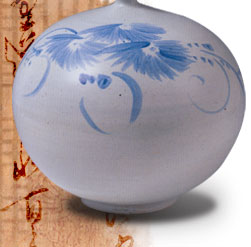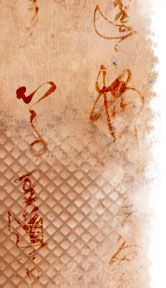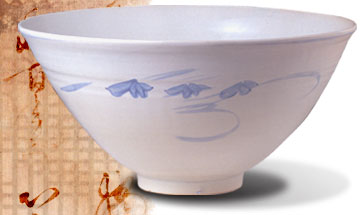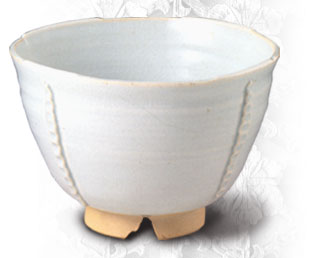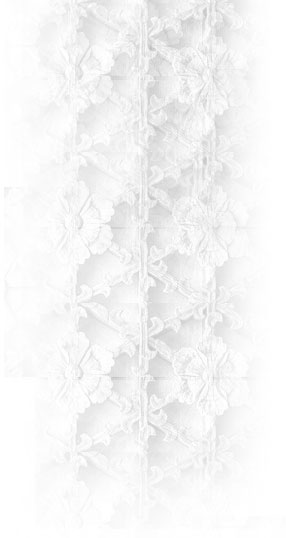 Every work of art is a reproduction of nature created by God. Thus, it may be said that the ceramic works Every work of art is a reproduction of nature created by God. Thus, it may be said that the ceramic works
 may be the closest one can get to God. Before God created the world, He produced four elements: earth, may be the closest one can get to God. Before God created the world, He produced four elements: earth,
 water, fire and wind. According to His plan, He interwove these four ingredients together, which then water, fire and wind. According to His plan, He interwove these four ingredients together, which then
 gave shape to the world, as we know it. The main material to make ceramic objects is earth. Earth, gave shape to the world, as we know it. The main material to make ceramic objects is earth. Earth,
 when mixed with water, becomes a form, a solid object, after it is molded by human hands. But it is fire, when mixed with water, becomes a form, a solid object, after it is molded by human hands. But it is fire,
 rather than human touch, that transforms the object into stone to become, for example, a bowl or a dish. rather than human touch, that transforms the object into stone to become, for example, a bowl or a dish.
 Wind also plays a part in this change, as it is this element that forces the tongue of the fire dragon to Wind also plays a part in this change, as it is this element that forces the tongue of the fire dragon to
 move freely throughout the kiln, so that its hot breath can give the molded form immortality. This extraordinary move freely throughout the kiln, so that its hot breath can give the molded form immortality. This extraordinary
 metamorphosis from nature to art is unequivocally one of the most exquisite gifts from God. metamorphosis from nature to art is unequivocally one of the most exquisite gifts from God.
 Ceramics change in form, style and features depending Ceramics change in form, style and features depending
 on the period when they were made, regions where they are on the period when they were made, regions where they are
 found and the individual artisans who create them. Those who found and the individual artisans who create them. Those who
 have knowledge of Far East Asian pottery and appreciate the have knowledge of Far East Asian pottery and appreciate the
beauty of the art are able to differentiate the traditional ceramic wares
of Korea, China and Japan. Chinese pottery, for example, are generally
larger and more colorful than their counterparts, whereas Japanese
pottery is characterized by its sophisticated style and delicate designs
carefully preset. Korean pottery, on the other hand, demonstrates
a demure, natural beauty with the least artificiality.
Art historians often point out that Japanese ceramics became renowned
the world over after the invasion of Korea by Japan from 1592 to 1598. Koreans
called this seven-year war, Imjin Waeran (‘The Japanese Invasion in the Imjin Year’);
however, many historians poignantly describe it as, ‘The War of Ceramics.’ When Japanese
forces finally left the Korean peninsula, they kidnapped several thousand potters of the Joseon Dynasty to bring home
as war trophies. Ironically, these wonderfully-talented Joseon artisans became the cornerstone for Japan’s global reputation
as the producer of the world’s finest ceramics. Some of the descendants of these earthenware artisans, including the
‘Six Families of lmnan Potters’ (referring to the seven-year war), are still thriving and are revered there as Japan’s top potters.
 The
aesthetic value of art is largely subjective; therefore, when comparing The
aesthetic value of art is largely subjective; therefore, when comparing
 two works of art, such as two examples of ceramics ware, it is often very difficult two works of art, such as two examples of ceramics ware, it is often very difficult
 to decide which one is superior and the inferior. Having said that, many knowledgeable to decide which one is superior and the inferior. Having said that, many knowledgeable
 pottery collectors who appreciate fine ceramics do not hesitate to say that they pottery collectors who appreciate fine ceramics do not hesitate to say that they
 admire Korean ceramic for their everlasting beauty. They affirm that to admire a admire Korean ceramic for their everlasting beauty. They affirm that to admire a
 Korean traditional pottery is like looking at a true masterpiece. Unlike the brash Korean traditional pottery is like looking at a true masterpiece. Unlike the brash
 artificiality of some artworks that cause restlessness in the body and soreness in the artificiality of some artworks that cause restlessness in the body and soreness in the
 forehead when they are looked upon for a long time, the exquisite natural beauty of Korean forehead when they are looked upon for a long time, the exquisite natural beauty of Korean
 traditional pottery soothes the eye, calms the mind and uplifts the soul. Ceramic lovers traditional pottery soothes the eye, calms the mind and uplifts the soul. Ceramic lovers
 often compare Japanese and Chinese ceramics with artificial objects while Korean often compare Japanese and Chinese ceramics with artificial objects while Korean
 pottery is associated with the natural world. Many of them know that one of the most significant pottery is associated with the natural world. Many of them know that one of the most significant
 aesthetic values of Korean traditional art, not just pottery, is the quest for the beauty of nature. It was aesthetic values of Korean traditional art, not just pottery, is the quest for the beauty of nature. It was
 this representation of nature created by God in Korean traditional ceramics that some of the world’s most renowned critics this representation of nature created by God in Korean traditional ceramics that some of the world’s most renowned critics
 and artists, such as Levi-Strauss, Bernard Leach and Yanagi Muneyoshi, praised joyously. and artists, such as Levi-Strauss, Bernard Leach and Yanagi Muneyoshi, praised joyously.
The delightful uniqueness of Korean earthenware, especially celadon porcelain, began to be known to the rest of the
world during the Goryeo Dynasty (918-1392). Although celadon porcelain was first introduced by China, Korean potters
brought it to life using their own original techniques and infused it with natural, unpretentious magnificence. During the
14th and 15th centuries, potters in these two countries began to shift their attention from celadon porcelain to white
ceramics, and in the following years these ceramic masterpieces spread throughout the world to Japan, Southeast Asia,
Western Asia, the Mediterranean and Western Europe.
Learn about art
If you want to learn more about art like this look into an online art degree. These days the popularity of online education is growing every day so now is as good a time as ever look into learning online! You can become part of one of several programs that provide online degrees in just about any subject imaginable. So learn about online programs today and discover more about Korean pottery!
View the master's works |













